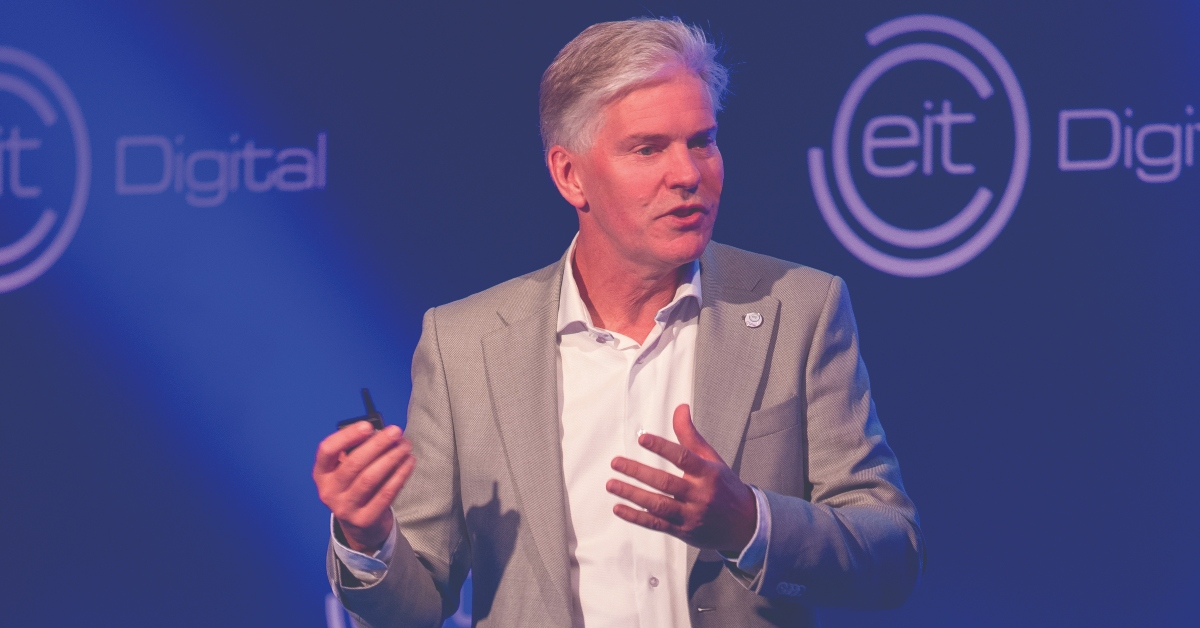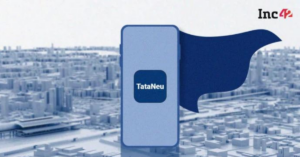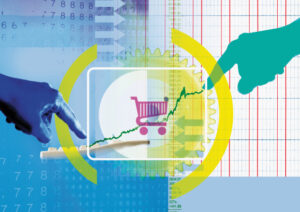Image credit: Willem Jonker
While COVID-19 vaccination has started, gradual lifting of lockdown measures will still take some time. Even then, close monitoring of local outbreaks will remain an essential tool to avoid larger-scale lockdowns. A cautious approach will be needed to permit again events involving larger crowds.
As a result, outbreak monitoring and contact tracing will remain essential in the foreseeable future.
In the Spring of 2020, we took a closer look at European efforts to better track COVID-19 contagion with the help of smartphone apps. We supported this initiative as a means to attain better and more data on the pandemic but also cautioned the complexity of using such apps and the shortcomings of Europe’s fragmented country-by-country approach.
Looking at the situation eight months later, we can ascertain that despite occasional progress the struggle continues. It is important, however, that the justifiably high hopes in vaccination do not lead decisionmakers to concentrate – once again –on a single solution for dealing with the pandemic.
So, the need remains to have a comprehensive system of restrictive measures, vaccination, testing and tracing that allows for a fast and safe recovery of our societies and economies. And indeed, this includes massive testing and contact tracing, the latter requiring automated support.
Lessons learned from the deployment of COVID-19 tracing apps in Europe
To better understand how to improve this integrated approach of restrictive measures, vaccination, testing and tracing, let us revisit what happened with the tracing apps.
Following the example of Asian forerunners like Singapore and South Korea, several European countries like Austria, Iceland, Hungary or Latvia launched and deployed contract tracing apps already in Spring and early Summer 2020. Others followed soon thereafter, leading to a scattered approach to a problem that respects no national borders. Coordination at the European level started only afterwards, with a focus on trying to create interoperability rather than getting to a unified approach.
Centralised vs decentralised
Two consortia of researchers, dominated by European players, worked in parallel on centralised (PEPP-PT/PEPP) and decentralised (DP-3T) protocols to run the tracing apps. Unfortunately, EU countries could not agree on a single path, which turned out to hinder interoperability at a later stage.
Apple and Google lead the way
At the same time, in the US, in an unprecedented collaboration, the tech giants Apple and Google released in May 2020 a joint framework and protocol specification for contact tracing (GAEN). Given the global dominance of Google Android and Apple iOS operating systems on the mobile phone market, it was inevitable that (almost) all contact tracing apps would eventually build on GAEN from the outset or were reconfigured to be compatible with this protocol.
EU attempts to collaborate
To overcome the fragmentation of EU Member States, the European Commission launched in September an interoperability gateway service, linking national apps across the EU. Unfortunately, however, as of today and almost four months after it became operational, only 11 of the 27 Member States have registered with the service.
The difference in approach at both sides of the Atlantic is exemplary for the broader digital domain: a fragmented Europe with complex decision-making facing US big tech operating fast and in a concerted manner. On the road to digital sovereignty Europe should draw lessons from the struggle with COVID contact tracing apps.
The result: low adaption rates
Contrary to early predictions that up to 85% of potential users would download contact-tracing apps, worldwide download rates have so far been much lower. In Germany, it has been around 21%, in Italy 14%, in France the initial contact tracing app StopCovid reached only 3%, while the new version TousAntiCovid is at 15%. With about 40%, Iceland and early mover Singapore have the highest download rates to date.
And let us not forget that downloading the app is not the same as using it or responding to warnings to self-isolate if the app tells you that you have been in contact with an infected person. In France, for example, it is reported that so far only 14,000 contact notifications have been sent by the system.
Latest research claims that contact tracing apps start to have a protective effect also at lower levels than the often communicated 60%, but experts agree that the effectiveness grows significantly with the deployment rate as can be seen in the figure below.
The root causes
There are several reasons why contact tracing apps have not delivered what was expected of them: privacy concerns, Speed of deployment got priority over essential functionality, Inadequate integration in the overall pandemic response approach.
Authorities often failed to ensure that tracing apps were well embedded in existing ecosystems to fight the pandemic. As we stated last Spring, medical experts have to assure that the app is integrated in a meaningful way into the overall virus containment approach. It is, for example, not helpful to have an app, if not enough testing facilities are in place, or if they are not easily accessible.
Automated contact tracing: a lost case?
There is no doubt that COVID-19 vaccines are the main long-term solution to fight this pandemic. However, it will still take some time to reach a critical mass of vaccinations and it is yet unclear to what extent vaccination will protect us against mutations and slow down virus transmission. As a result (local) outbreaks of COVID-19 are expected to take place for quite some time. Finally, we also need to look beyond COVID-19 and prepare for future pandemics.
The role of automated contact tracing
As stated above, contact tracing apps’ uptake in Europe was limited and their use ineffective. However, this should not lead to the conclusion that automated contact tracing has no role in fighting a pandemic. On the contrary, it will have particular relevance during the recovery phase when restrictive measures will gradually be released, and society reopens.
Consider alternative tracing technologies
Parallel to app developments, we stressed in earlier discussions the importance to think about alternative technologies, one of them being physical tokens. Tokens are a proven technology in the logistics domain and have meanwhile been deployed in Singapore to trace COVID-19 infections.
Physical tokens only require the minimal functionality for contact tracing which has, for this specific purpose, advantages over smartphone apps. They are small, robust, cheap, and consume little energy.
Physical tokens are very well suited to support automated contact tracing to reopen schools, workplaces, sport events and concerts :safe, privacy-protecting, easy to use and can be produced at low cost and deployed at any local event and environment, whether a school, workplace, football game, or theatre play; They can easily be acquired by individual organisations, be distributed to everyone entering a premise, and if needed they can even be disposed after a couple of weeks. No download or installation is needed, no connection to personal data possible.
In response to an EIT Digital call to investigate the tracing token technology, 4 activities were started across Europe to test the application of COVID-19 tracing with physical tokens in real-life settings, addressing events and situations that are crucial for opening essential parts of Europe’s economy. EIT Digital partners in the Nordics, Benelux, Italy and the UK created ventures to pilot different token solutions and to commercialize and deploy their products.
We invite governments and authorities, but also actors from business, sports and cultural sectors across Europe to seriously look into these technologies and consider using tracing tokens for specific targeted use of opening schools, workplaces, or events. At this point, we must consider all options that could benefit a faster and safer return to a thriving economy and an open society.
Author: Prof. Willem Jonker is the CEO of EIT Digital. He has a broad background in ICT, both in the industry as well as in academia. He studied mathematics and computer science at Groningen University, worked at the Delft University of Technology, received his PhD from the University of Utrecht, and is a part-time full professor in computer science at Twente University.



![Read more about the article [Funding alert] Lumiq raises $2M in seed round led by Info Edge Ventures](https://blog.digitalsevaa.com/wp-content/uploads/2021/07/Cub-1576766516895-300x150.png)








Wow! Such a great article you have there especially now.I hope you will post more articles soon. Thank you.
Thanks and Keep sharing. Keep safe.
Thanks, Kent! Your comment means a lot to us. Please subscribe to our blog, we will surely come up with more of such useful articles. Stay safe